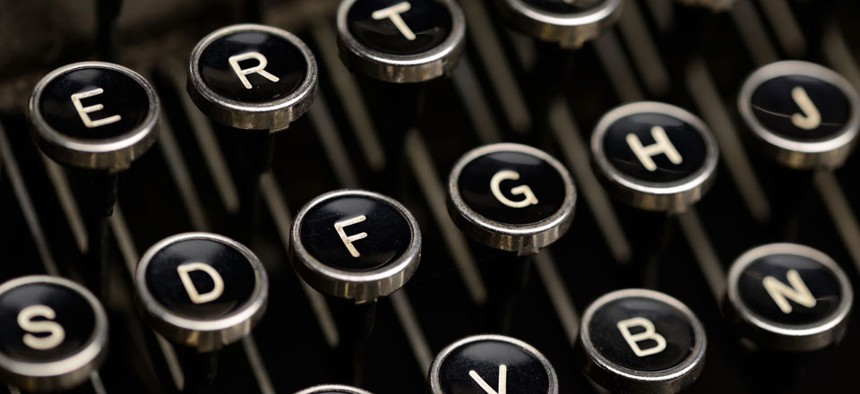
BrianWancho/Shutterstock.com
Actually, Switching Fonts Won't Save the Government That Much Money
Design blogger pokes holes in 14-year-old's savings plan.
Last week, media outlets (like us) were charmed by 14-year-old Suvir Mirchandani's elegant plan to save the government millions and millions of dollars, simply by switching from Times New Roman to Garamond for official print documents. (The theory being that the new font would use less ink per page, multiplied by the quadrillions of reams of paper the government burns through every year.) Today we learned that the plan, which seemed too good to be true, is indeed too good to be true.
Fastcodesign.com cites blogger Thomas Phinney as the theory's debunker. According to Phinney, a font enthusiast with an M.S. in printing, there are several problems with Mirchandani's analysis. First, he writes in a blog post, printing in Garamond in the standard size 12-point font is unrealistic, because all 12-point fonts are not created equal. Garamond 12 is too small, and thus too hard to read at 12-points, so printers would likely opt for a larger size — which would end up costing basically the same amount as Times New Roman in 12-point.
Most scientific studies comparing typefaces first compensate by resizing the fonts to eliminate differences in the lowercase height (called x-height by us font geeks). This study failed to do that. As a result, they actually get results that are the exact opposite of other studies. Century Gothic has a very large x-height, so printed at the same nominal point size uses more ink than Times. Printed at the same x-height (as in other studies), it would use less.
Phinney adds that it's also problematic to assume that the government prints papers in the same way that individuals, or schools, do:
Many of the documents that account for a substantial percentage of the government’s overall printing costs are printed on a printing press, using offset lithography. For offset printing, the percentage of the cost of that is associated with ink is in fact much smaller than for laser or inkjet printing.... Additionally, because of the huge cost of owning printing presses, many or most offset litho jobs will be printed out of house, using third-party printers.
Basically, no matter how you look at it, there's no way that Mirchandani's plan would save the government a substantial amount of money.
It is important to note, however, that this information didn't come from the government itself, but from an interested onlooker. When CNN questioned a representative from the U.S. Government Printing Office (GPO) on the possibility of switching over to Garamond, he gave nothing approaching Phinney's careful analysis. All he said was that the government is moving away from printing and towards digital, which is really neither here nor there. You'd think that the agency tasked with printing would be equipped with a fuller explanation for all printing practices, especially when confronted with an eager student brainstorming creative solutions to real-world problems ... like government waste.
(Image via BrianWancho/Shutterstock.com)






